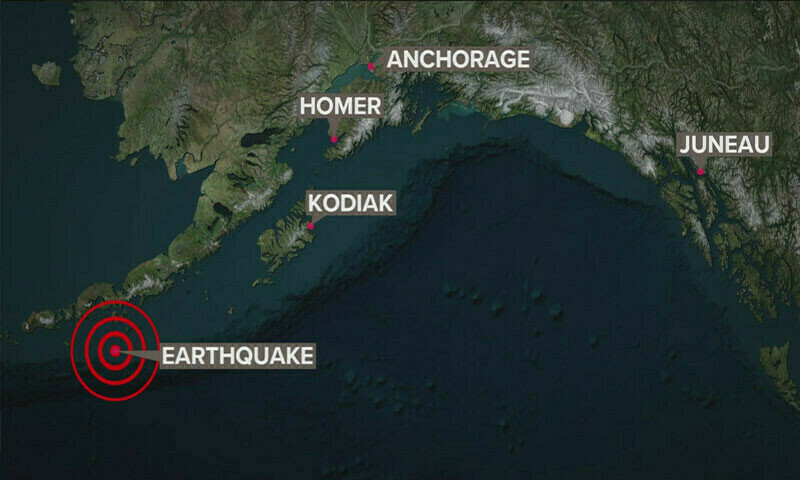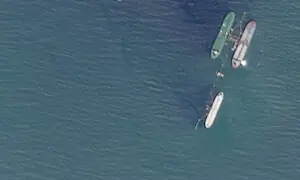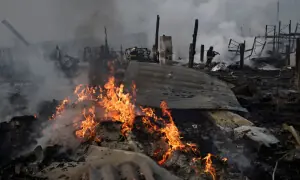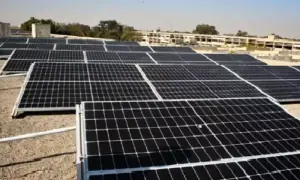7.3 magnitude earthquake hits Alaska, triggering tsunami warning
A strong earthquake with a magnitude of 7.3 struck the state of Alaska, in the early Thursday morning, prompting a tsunami warning for coastal areas.
Following the earthquake near the Aleutian Islands, a tsunami warning was issued for several hours in major coastal regions of Alaska, which was later downgraded to a low-risk tsunami advisory before being lifted. Authorities reported no immediate reports of injuries or damage.
According to the US Tsunami Warning Center, the earthquake occurred at 12:38pm local time, with its epicenter located about 55 miles south of Sand Point, near Popof Island. The earthquake had a depth of 12 miles, classifying it as a shallow quake.
Experts noted that shallow earthquakes can be more dangerous because their shocks reach the surface quickly, potentially causing significant damage to buildings and resulting in casualties.
Initially, authorities issued a tsunami alert from Unimak Pass to Kennedy Entrance, located 40 miles south of Homer. While the tsunami warning center dismissed the likelihood of large-scale water inundation, it cautioned that rapid sea currents or waves could pose a danger to those near the water.
Emergency shelters were opened in a city on Kodiak Island, Kodiak with a population of about 5,500, and sirens were sounded. The warning was later lifted, and the public was given an “all clear” message at 2:45pm local time.
Rescue agencies indicated that Anchorage, Alaska’s largest city, was not at risk from the earthquake. Sand Point’s city administrator, Debbie Schmidt, told a local NBC channel that “this earthquake was the most powerful jolt of their lives.”
According to the National Weather Service, the tsunami warning was the highest level of alert, meaning residents should immediately move to higher ground or inland.
Additionally, if a tsunami advisory is issued, the public is advised to stay away from coastal waters, beaches, and riverbanks.
The subduction zone around Alaska and the Aleutian Islands is known as one of the most seismically active areas in the world, where the majority of earthquakes measuring over 8 in magnitude have been recorded in the past century.
This region frequently experiences earthquakes along with coastal and underwater landslides that can generate tsunamis. It is home to over 130 volcanoes and volcanic fields, with three-quarters of the volcanic eruptions in the United States occurring in this area over the past two hundred years.
Alaska experiences more large earthquakes than any other state in the US, with three-quarters of its population living in areas that could face a magnitude 7 quake.
Experts warn that US coastal areas are at risk from interconnected threats such as earthquakes, landslides, and tsunamis. These hazards often occur simultaneously in marine environments, and sometimes an earthquake occurring in a distant location can have devastating local effects.
As more people move to coastal areas, the social impacts of these risks are expected to increase in the future. Authorities have urged citizens to heed government guidelines, take precautions, and ensure quick evacuation in any emergency situation.
Although there was no damage from this earthquake, experts caution that such shocks in a seismically active area like Alaska could signal future risks, especially for coastal regions where landslides and tsunamis pose compounded threats.
The public is advised to remain vigilant and follow emergency instructions promptly.
For the latest news, follow us on Twitter @Aaj_Urdu. We are also on Facebook, Instagram and YouTube.





















Comments are closed on this story.